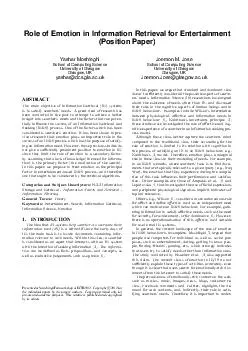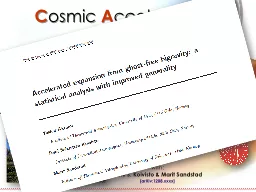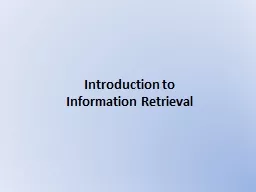PDF-Role of Emotion in Information Retrieval for Entertainment Position Paper Yashar
Author : trish-goza | Published Date : 2014-10-08
glaacuk Joemon M Jose School of Computing Science University of Glasgow Glasgow UK JoemonJoseglasgowacuk ABSTRACT The main objective of Information Retrieval IR
Presentation Embed Code
Download Presentation
Download Presentation The PPT/PDF document "Role of Emotion in Information Retrieval..." is the property of its rightful owner. Permission is granted to download and print the materials on this website for personal, non-commercial use only, and to display it on your personal computer provided you do not modify the materials and that you retain all copyright notices contained in the materials. By downloading content from our website, you accept the terms of this agreement.
Role of Emotion in Information Retrieval for Entertainment Position Paper Yashar: Transcript
Download Rules Of Document
"Role of Emotion in Information Retrieval for Entertainment Position Paper Yashar"The content belongs to its owner. You may download and print it for personal use, without modification, and keep all copyright notices. By downloading, you agree to these terms.
Related Documents














